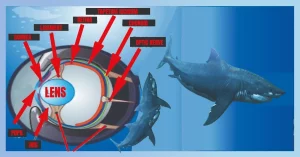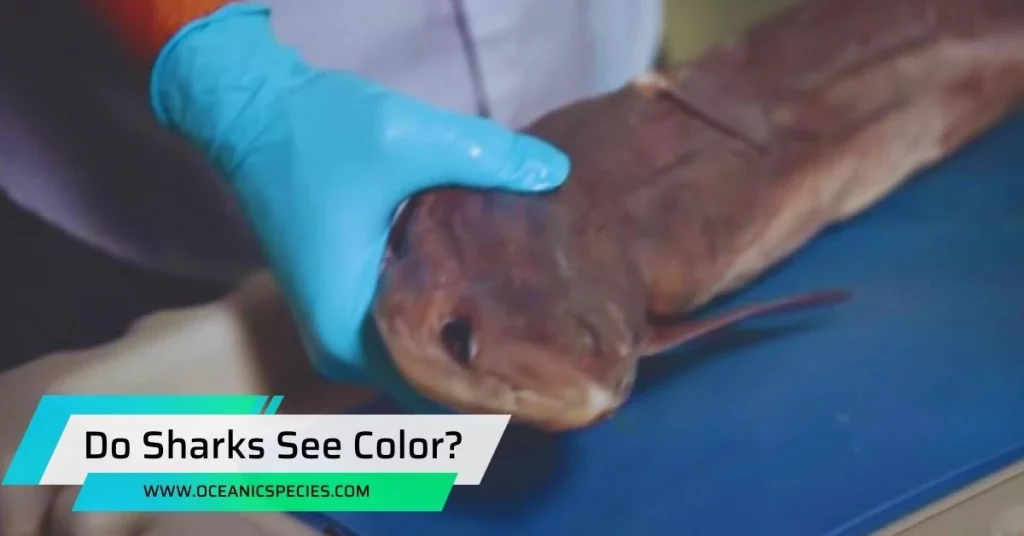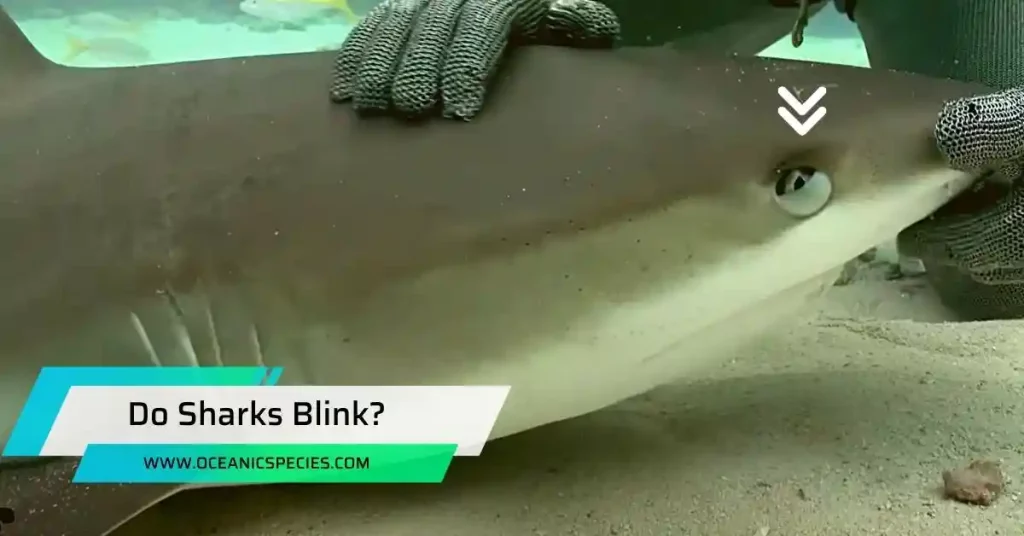Sharks can see colors, but their color vision is limited compared to humans. Sharks have color-detecting cells called cones in their eyes, but they have fewer cones than humans, making their ability to perceive colors less detailed.
Sharks have color-detecting cells called cones in their eyes, but they have fewer cones than humans, resulting in a less detailed perception of colors. However, they can still distinguish between different colors to some extent. While sharks may not see colors as vividly as humans, their vision is adapted for different purposes, such as detecting contrasts and movement in their underwater environment.
Understanding how sharks perceive colors can provide insights into their behavior and interactions with their surroundings. We will explore the topic in depth and discuss the fascinating world of shark color vision.
The Physiology Behind Shark Vision
While sharks have incredible visual adaptations, their ability to see colors is still a subject of ongoing research. Nonetheless, their unique eye structure and adaptations allow them to navigate their underwater world with remarkable efficiency and precision.
Explore The Anatomy Of A Shark’S Eye
The shape and structure of a shark’s eye vary depending on its species. Some have round eyes, while others have more elongated and cat-like eyes.

The placement of a shark’s eyes on the sides of their head allows for a wider field of view, enabling them to better detect movement in their surroundings. The cornea, the transparent outer layer of the eye, protects the delicate structures within and plays a role in focusing light onto the retina.
The Unique Adaptations That Contribute To Their Visual Capabilities
A specialized structure called the tapetum lucidum enhances a shark’s ability to see in low-light conditions. This reflective layer behind the retina reflects light back through the retina, maximizing the available light for vision.
The lens of a shark’s eye is typically spherical, which allows for sharper focus underwater and reduces distortion caused by the bending of light. Sharks have a higher concentration of rod cells, which are responsible for detecting light and motion, compared to cone cells, which are responsible for color perception.
The presence of a nictitating membrane protects the shark’s eyes while still allowing them to see. This protective eyelid slides shut when the shark is attacking prey or when in close proximity to potential hazards.
The Presence Of Rods And Cones In Shark Retinas
Rod cells are highly sensitive to light and motion, allowing sharks to see well in dimly lit environments and detect prey from a distance. Cone cells are responsible for color vision, but sharks have fewer cones compared to other animals. This deficiency suggests that sharks may have limited color vision or see in shades of gray.
The distribution of rods and cones across the shark’s retina differs, with a greater concentration of rod cells towards the periphery. This adaptation enables sharks to have better peripheral vision to detect movement and potential threats from all angles.
Debunking The Myth: Sharks And Color Perception
The notion that sharks are colorblind is a misconception that has been debunked by scientific research. While their color perception may not be as extensive as that of humans, sharks possess cone cells in their retinas that enable them to detect different wavelengths and perceive colors to a certain degree.
The Misconception That Sharks Are Colorblind
Contrary to popular belief, sharks are not colorblind. It was once thought that they could only distinguish between light and dark shades, leading to the assumption that they saw the world in black and white. However, studies have shown that sharks possess the ability to perceive colors, although their range may be more limited compared to humans.
- Sharks do not perceive colors as vividly as humans, but they can still differentiate between certain hues.
- The notion of sharks being colorblind originated from the belief that their retina primarily consists of rod cells, which are responsible for black and white vision.
- However, further research has revealed that cone cells, responsible for color vision, are also present in shark retinas, albeit in lower numbers compared to humans.
The Scientific Evidence Supporting The Claim That Sharks Can Perceive Colors
Scientific evidence strongly suggests that sharks have the ability to perceive colors, challenging the misconception of their supposed colorblindness. Several studies have provided valuable insights into this aspect of shark vision.
- Research conducted at the university of queensland in australia used a technique called microspectrophotometry to examine the photoreceptor cells in shark retinas.
- The study revealed the presence of cone cells sensitive to different wavelengths of light, indicating that sharks have the potential to perceive a limited range of colors.
- Another study conducted by the university of western australia tested the color vision of captive sharks using controlled experiments.
- They found that sharks exhibited differential responses to various color stimuli, indicating their ability to perceive and differentiate colors to a certain extent.
Explore The Role Of Cone Cells In Shark Retinas And Their Ability To Detect Different Wavelengths
Cone cells play a crucial role in shark retinas, enabling them to detect different wavelengths of light and perceive colors to some extent. While sharks may not possess the same level of color discrimination as humans, their cone cells offer a unique perspective on color vision.
- Shark retinas possess two types of cone cells, known as long-wavelength sensitive (lws) and short-wavelength sensitive (sws) cones.
- These cone cells are sensitive to specific ranges of light wavelengths, allowing sharks to perceive colors within those ranges.
- The lws cones are more prominent in shark retinas and are believed to provide vision in the longer wavelength spectrum, including red and orange hues.
- On the other hand, sws cones are responsible for detecting shorter wavelengths, including blue and green colors.
Understanding Shark Color Vision

While sharks may not have the same vibrant color vision as humans, their ability to perceive certain colors in the blue-green spectrum offers advantages in terms of hunting, mating, and survival. Understanding their unique visual perception provides insights into the fascinating world of these oceanic predators.
How The Perception Of Colors Differs Between Sharks And Humans
While humans possess three types of color-detecting cells called cones in their eyes, sharks only have two types of cones. This means that they have a limited ability to discriminate between colors. Sharks primarily perceive colors in shades of green and blue due to the specific wavelengths that their cones are sensitive to.
Unlike humans, sharks are generally considered to be colorblind, as they have a reduced ability to differentiate between colors, especially in the red spectrum. The lack of a red cone in shark eyes makes it challenging for them to distinguish between red, orange, and brown colors.
The Specific Colors That Sharks Can Perceive And Their Significance In Their Natural Habitat
Sharks can perceive colors in the blue-green spectrum of the underwater world, as this aligns with the wavelengths their cones are most sensitive to. Blue is a dominant color in the ocean, allowing sharks to blend in with their surroundings and remain camouflaged from prey and predators.
Shades of green are also important for sharks, as they help in differentiating objects from the surrounding blue, such as potential prey or obstacles. Some researchers argue that while sharks have limited color vision compared to humans, they may compensate with heightened sensitivity to contrast and movement.
The Advantages Of Color Vision For Hunting, Mating, And Survival
Hunting:
- Although sharks have limited color vision, their ability to perceive shades of blue and green aids them in detecting contrasts and patterns. This helps them spot potential prey against their environment.
- Sharks’ predominantly blue and green perception allows them to blend in with the vast blue depths, making it easier for them to approach unsuspecting prey.
Mating:
- Color signals play a crucial role in the courtship and mating rituals of many animal species, but sharks rely more on visual cues like patterns and body language rather than specific colors.
- Some species, such as the hammerhead shark, exhibit sexual dimorphism, where males and females have different physical appearances that signal maturity and readiness to mate.
Survival:
- Color vision is critical for sharks when it comes to assessing their environment and potential threats. By perceiving contrasting colors, they can identify dangers, such as predators or territorial disputes.
- The ability to distinguish certain colors could assist sharks in recognizing injured or sick individuals within their social group, allowing them to engage in cooperative behaviors or avoid them to maintain their own well-being.
Factors Affecting Shark Color Vision

Various factors influence shark color vision. Water depth and clarity, as well as ambient light conditions, play significant roles in determining the range and visibility of colors that sharks can perceive. Environmental factors, such as water temperature, can also impact their visual acuity.
The Impact Of Water Depth And Clarity On Shark Color Perception
Water depth plays a crucial role in shark color perception. As sunlight penetrates the water, it becomes less intense, causing colors to appear duller and less vibrant. This means that sharks at deeper depths may not perceive the same range of colors as those closer to the surface.
Similarly, water clarity influences shark color perception. Murky or turbid waters can hinder the transmission of light, making it more difficult for sharks to distinguish colors. On the other hand, clear waters allow for better color visibility, enabling sharks to perceive a wider spectrum of colors.
The Role Of Ambient Light And Its Effects On Color Visibility
Ambient light, such as sunlight or artificial light, greatly impacts shark color visibility. Bright light conditions enhance the visibility of colors for sharks, allowing them to distinguish between different hues more effectively.
However, in low-light conditions or at night, sharks rely on other sensory mechanisms, such as their keen sense of smell and electroreception, to navigate and locate prey. During these times, the perception of colors may be less relevant to their hunting strategies.
The Influence Of Environmental Factors, Such As Water Temperature, On Shark Vision
Water temperature can affect shark vision and their ability to perceive colors. Colder temperatures can potentially impair their visual acuity, making it more challenging for them to discern fine details and colors. Additionally, fluctuations in water temperature can impact the metabolic rate of sharks, which in turn may influence their visual sensitivity to colors.
Comparative Analysis: Shark Vision Vs. Other Marine Creatures
While sharks may not possess the same level of visual acuity or color vision as some of their counterparts, they have developed unique abilities that make them apex predators in their own right.
The Visual Abilities Of Sharks With Other Marine Animals
Sharks have unique visual abilities that set them apart from other marine animals. Here’s how their vision compares:
- Acuity: Sharks have well-developed visual acuity, meaning they can see fine details with clarity. This allows them to spot prey from a distance and make accurate calculations for successful hunting.
- Color vision: While it was once believed that sharks were colorblind, recent studies suggest that they do possess limited color vision. However, their color vision is not as vibrant as that of humans or some other marine animals.
- Night vision: Sharks have an exceptional ability to see in low-light conditions, making them formidable predators during the nocturnal hours. They have a higher number of rod cells in their retinas, which enhances their ability to detect movement and contrasts even in dimly lit environments.
- Peripheral vision: Sharks have an impressive field of view, with panoramic vision that covers a wide range of their surroundings. Their eyes are positioned on the sides of their head, allowing them to see objects in their peripheral vision while also maintaining focus on their prey.
The Advantages And Limitations Of Shark Color Vision In Comparison To Their Prey Or Competitors
Shark color vision, albeit limited, comes with its own advantages and limitations when compared to their prey and competitors:
Advantages:
- Camouflage detection: Limited color vision enables sharks to detect subtle changes in their environment, making it easier to differentiate between camouflage and potential prey.
- Depth perception: While not as advanced as that of humans, sharks’ color vision allows them to perceive depth, which helps them navigate and hunt effectively.
Limitations:
- Lack of vibrancy: The color spectrum perceived by sharks is not as vivid and vibrant as that of other marine animals, making it more challenging for them to discern certain colors accurately.
- Prey detection: Some marine animals have developed intricate color patterns that act as defense mechanisms or attract mates. Sharks may struggle to identify and react to such patterns due to their limited color vision.
Examples Of Marine Animals With Remarkable Visual Adaptations
In the vast ocean, there are several marine animals that have evolved remarkable visual adaptations to survive and thrive. Here are a few noteworthy examples:
- Mantis shrimp: Mantis shrimps possess one of the most complex visual systems in the animal kingdom. They have extraordinary color vision and can perceive a vast range of colors, including ultraviolet light. This provides them with an advantageous perspective when hunting or communicating.
- Cuttlefish: These cephalopods have sophisticated color-changing abilities, allowing them to blend seamlessly with their surroundings. Cuttlefish can also display intricate patterns and hues for communication and courtship, fooling both predators and potential mates.
- Manta rays: Manta rays have large, forward-facing eyes that enable them to see in exceptional detail. They are known to have excellent vision, which aids them in efficiently navigating their surroundings and locating their prey.
- Octopuses: With their incredible ability to change color and texture, octopuses are masters of disguise. They can flawlessly match their surroundings and effectively hide from both prey and predators. Their eyes, while similar to human eyes, have adaptations that allow them to spot small details even in low-light conditions.
Shark Vision Research And Its Implications
Ongoing research efforts in understanding shark vision have revealed fascinating insights about their visual capabilities. This knowledge has profound implications for both the conservation of these magnificent creatures and the advancement of technology in fields such as robotics and underwater exploration.
An Overview Of Current Research Efforts In Understanding Shark Vision:
Scientists have made significant progress in unraveling the mysteries of shark vision, particularly in studying the retina and photoreceptor cells. Research has shown that sharks possess several types of photoreceptor cells, including rods and cones, similar to humans.
These cones may enable sharks to perceive color, although their color vision might differ from humans. Studies have also indicated that sharks have excellent visual acuity, with some species able to see objects at a distance of up to 300 meters.
The Implications Of Studying Shark Vision For Conservation And Understanding Their Behavior:
Understanding shark vision can shed light on their hunting strategies, helping researchers develop effective conservation measures. By studying the visual preferences of sharks, conservationists can design more efficient bait and lure deterrents, reducing human-shark interactions. Additionally, research on shark vision can provide insights into their habitat preferences, migration patterns, and behavioral responses to changes in their environment.
Potential Applications Of Shark Vision Research In Fields Such As Robotics And Underwater Technology:
Insights gained from studying shark vision can inspire the development of advanced underwater imaging systems, allowing researchers to observe marine life with improved clarity. By emulating shark visual systems, engineers could devise autonomous underwater vehicles with enhanced navigational capabilities. The study of shark vision may also contribute to the design of non-invasive tagging technologies, allowing for more precise tracking and monitoring of sharks in their natural habitats.
Frequently Asked Questions
How Do Sharks See Underwater?
Sharks have a clear membrane called a nictitating membrane that protects their eyes while they swim.
Can Sharks See In The Dark?
Yes, sharks have a special layer called the tapetum lucidum that enhances their night vision.
Can Sharks See In Murky Water?
Sharks have a remarkable ability to see in murky water due to their special sensory organs called ampullae of lorenzini.
Can Sharks See In Complete Darkness?
Sharks can navigate in low-light conditions due to their highly sensitive eyes and the presence of bioluminescent organisms in the ocean.
Conclusion
The question of whether sharks see color has mystified scientists for many years. Through research and observation, it is clear that while sharks have the physiological ability to perceive colors, their perception may be limited compared to humans. Sharks primarily rely on other senses such as smell and movement to navigate and hunt.
However, studies have shown that they are able to distinguish between different colors, particularly in controlled experiments. While their visual acuity may not be as advanced as ours, it is evident that sharks are not completely colorblind. Understanding how sharks perceive their surroundings, including color, is crucial for further research and conservation efforts.





